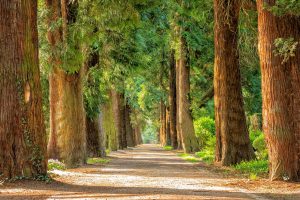Community forests bring a lot of joy to people everywhere in England. They are the lungs of big metropolitan areas and they provide the much-needed space to rest and decompress after a stressful week. But ‘what are community forests’, you might ask.
Quite obviously, they are forests developed by public agencies, and they have an important part to play in ecosystems in England. In this article, we will tell you more about how the concept of community forest came to be, who takes care of them, and why they are important for England.
The Creation of Community Forests

Community forests are sort of a new thing; they describe a specific type of forest in England and not every forest you can visit is a community forest. In fact, community forests were mostly artificially created in order to battle deforestation and air pollution. For this reason, community forests can be found around bigger city centres that do need the extra tree.
The program for community forests in England only started in the 1990’s and it is a government initiative. In order to turn that dream into reality, the Forestry Commission partnered with the Countryside Agency (both agencies are part of the British government), as well as with local councils.
It should be noted that a large portion of the existing community forests in England are on private, rather than public land. This means that the agencies behind the community forests had to heavily rely on private landowners to achieve their goal by incentivising them to plant trees.
Although a big portion of the forests are on private land, many parts of them can be easily accessed by the public after negotiations with the landowners. After all, one of the goals of the initiative for community forests was to increase the access to green spaces for the public.
In 1991, the first two community forests were created in Northwest England. The Mersey Forest covered large parts of Merseyside, as the name suggests, as well as North Cheshire. The second forest, Red Rose Forest, which is now known as ‘The City of Trees’, was established in Greater Manchester. Eight more forests have since been created.
The Importance of Community Forests
The main reason why the government undertook this great task was the increasing deforestation of England. The areas where the ten community forests in England were established, the forest coverage was less than 7% and one of the continuous targets for this project is to bring it up to 30%.
It’s needless to say that trees are the answer to many ailments. The rising population of England negatively contributes to carbon emissions and this in light of climate change is catastrophic.
Trees feed off carbon dioxide and the website for the Community Forests Trust calculates that the trees in these ten forests absorb 847 tonnes of harmful gases per year or the equivalent of the gases produced by 1,882 cars.
Another reason for the forests’ creation, which might be surprising to those, has to do with water. Trees can in fact prevent floods and can even clean polluted water. They do the former by reducing water runoff that can overwhelm the drainage system and they clean water by preventing soil erosion.
Furthermore, the forest initiative means to help English biodiversity, both its flora and fauna. One of the biggest challenges that wildlife all around the world faces today is not poaching but the loss of habitat whether that be through building in areas where wild animals live or by extracting recourses, like trees, from their homes.
Finally, the location of the forests is also very important. As we previously mentioned, the community forests are purposefully established near metropolitan centres. That not only allows residents to relax in nature, but it also directly impacts the levels of clean air and water with the strategically placed trees.
Location of Community Forests in England
There are ten community forests so far and if you find yourselves around these areas, we recommend you check them out:
- Forest of Avon – Bristol and Avon
- Great Western Community Forest – Swindon and the area
- Greenwood Community Forest – West Nottinghamshire
- Forest of Marston Vale – Bedford to Milton Keynes
- Forest of Mercia – Staffordshire and West Midlands
- Mersey Forest – Merseyside and North Cheshire
- City of Trees (Red Rose Forest) – Greater Manchester
- HEYwoods – Kingston upon Hull and East Riding of Yorkshire
- Thames Chase – Bruntwood, Barking and Dagenham, Havering, Thurrock and Essex
- White Rose Forest – Leeds City, North and West Yorkshire

